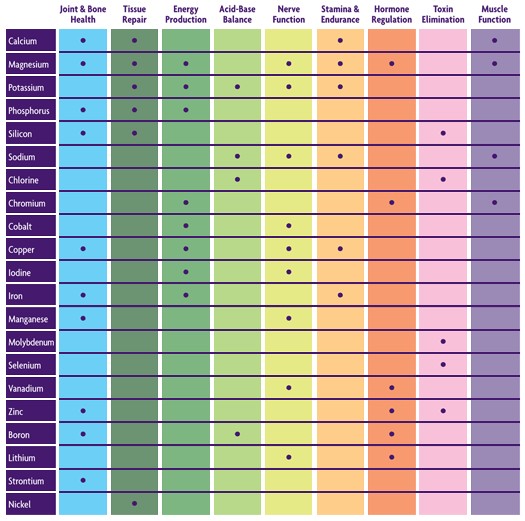

Many cofactors are minerals in the form of ions. Inorganic cofactors: Many enzymatic actions would not occur without the help of cofactors.Nerve impulses from the brain and vice-versa would not be able to travel without electrolytes, and the brain itself would not function. The brain also needs electrolytes to send signals to different types of muscles, including the internal organs. The heart muscles, in particular, need a constant supply of electrolytes in order to beat. In fact, muscles wouldn’t be able to contract without electrolytes. Electrolytes: Electrolytes maintain the osmotic pressure in the cells that facilitate the cellular transport of fluids and materials.Here are some examples of how they are used in the body: For example, calcium deficiency can lead to osteoporosis, especially in old people.Īs we’ve mentioned, minerals have various functions, behaving as electrolytes, cofactors, and as structural materials for bones. The seven major minerals are the macronutrients, namely:ĭeficiency in one or more of these can lead to serious health problems. Eggs are another example of daily sources of minerals, specifically phosphorus, iron, and selenium. If you regularly drink milk, you’ll probably be getting the required daily allowance of calcium and zinc. Similarly, calcium and zinc are commonly found in milk and other dairy products. These are also responsible for transmitting electrical signals to different parts of our body from the brain and vice versa. Table salt provides sodium and chloride ions that are necessary for maintaining the osmotic pressure in the cells. The most common minerals are those that are virtually ubiquitous in our daily diet.įor example, table salt is in almost all the food we eat. Unless closely monitored by a nutritional expert, few people have a perfectly balanced diet that includes all the essential macronutrients and micronutrients needed in precise proportions. The trace minerals are iron, zinc, manganese, copper, cobalt, fluoride, iodine, and selenium.

They mainly function as cofactors (meaning they help enzymes work as catalysts), and as components of biological molecules like haemoglobin.

Minerals are most commonly found in fruits and vegetables Non-essential minerals For example, arsenic is toxic, but it naturally occurs in the environment, especially when certain pollutants seep into the soil.īecause of this, arsenic is easily absorbed by green, leafy vegetables like lettuce, radishes, broccoli, Brussels sprouts, kale, and cabbage. Some are even potentially harmful when taken in excess amounts. What Are Minerals in Food?Ī wide variety of minerals are found in food, but many of these aren’t useful for human metabolic processes. As we mentioned, these function as electrolytes and cofactors, as well as inorganic materials for the synthesis of biomolecules, and for building tissues like bones. We need a range of minerals to function normally and maintain health, including calcium, iron, zinc, iodine, phosphorus, potassium, magnesium, sodium, chloride, copper, and fluoride. All organisms need minerals, but in varying amounts and types. They fall into two classifications: macrominerals and trace minerals. Minerals are inorganic micronutrients needed by the human body for a wide range of purposes. What Are Minerals Used For in the Body?.


 0 kommentar(er)
0 kommentar(er)
